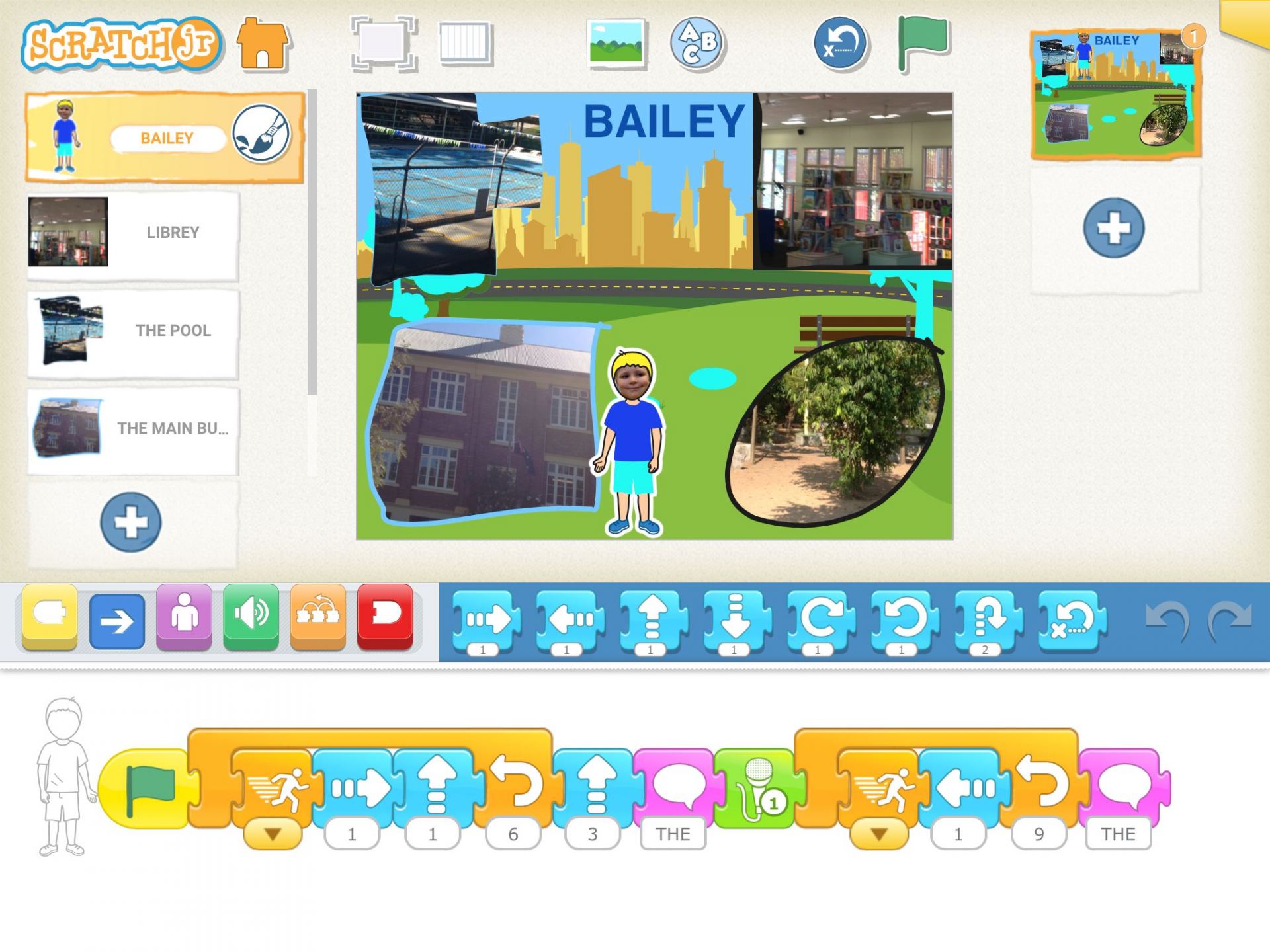Currently our year levels are implementing and assessing one part of the Digital Technologies Curriculum. This is the computational thinking part of the Band Description. After our initial year of exploration, this is our first year to assess, and this narrrow work is enabling us to focus on the creation of the digital solution and this one key element within it. Of significance is that all of the tasks have the potential next year to include the other aspects for assessment with a minimum amount of effort.
For Year 2, this involved teaching the content descriptor of ‘following, describing and representing a sequence of steps and decisions (algorithms) needed to solve simple problems.’ When unpacking this descriptor and exploring resources that assisted us to teach this area, the teachers were able to expand on their understanding of what a digital solution could be for this year level and also the underlying concepts of computational thinking – decomposition, abstraction, patterns, algorithmic thinking. As this work occurred, there were also opportunities for seeking alignment opportunities between this curriculum and other curriculum areas. Central to our need to seek alignment is the need for a context for a digital solution for our young learners. For these teachers, History was the learning area that provided such an opportunity.

We have also been doing work lately that has encouraged us to look at the General Capabilities and how they relate to the focus Learning Area. For us, we have included Literacy, Numeracy, ICT and Critical Creative Thinking in our planning – shown beneath this text on the right.

Within History, Knowledge and Understanding for Year 2, the students students “describe a person, site and/or event of significance in the local community and explain why places are important to people. They identify how and why the lives of people have changed over time while others have remained the same.” For our children, they focus their inquiry on our school site, discovering information about sites of significance and why they are important to people.

For our Digital Technologies work, the teachers decided to use this knowledge built up from their study of our local school and to use Scratch Jnr as an opportunity for the creation of a digital solution. The children have been walking around and taking photographs of these sites, adding to Scratch Jn on a background template map. For them to be able to record their understanding of the historical significance of that site, they need to add a character that represents themselves moving from one site to the next.

Here is a representation of the algorithm that allows them to do that:

And an example of the work that I captured from a child wandering the grounds yesterday:
It is interesting to consider the assessment of his task and how our teachers will differentiate between an A, B and C in Digital Technologies Processes and Production Skills. Classroom teachers grapple with this process all the time across all learning areas. I have to admit that for me, when working with these teachers, I struggled to be able to identify the small aspects of difference we would see when giving all children the opportunity to be able to demonstrate an ‘A’ standard.
By the end of our work, we deduced that after the children had had the experience of creating the digital solution (described above), we could easily ask for some further evidence of their understanding by giving them an additional simple task to solve. With a print out of their Scratch Jn maps (a screen shot), we would ask for a written representation of an algorithm that gets them quickly from one location to the next avoiding another feature. In this way, we could see whether they were just designing a sequence of steps OR whether they were designing an efficient, succinct and accurate sequence. Written on the Guide:
Assessment:
Using the screen shot of the code (from above) will clearly show a C level within Digital Technologies. To distinguish between A and B for Digital Technologies – Process and Production Skills, on the print-out, ask the child to draw a simple code for the quickest way to move the character from one place to another.

So, in summary:
- The alignment between History and Digital Technologies within this learning experiences was an opportunity for the children to have a context for their digital solution. Never were we ‘integrating’ for the purpose of covering both areas at once. The children’s inquiry in History was done in separate learning time. Of course, our Digital Technologies work gave the children to opportunity to reinforce their knowledge and understanding of this Historical area of study and to possibly provide the means by which some children achieved deeper understanding – but never were we integrating. We had included a Knowledge and Understanding descriptor for History on this guide but inquiry skills for History/HASS were assessed in a different way, at a different time.
- The assessment component is important and the scope of the task needs to be such that all children have the opportunity to achieve an ‘A’ standard. This should be made explicit to the child and presented in child friendly language.

